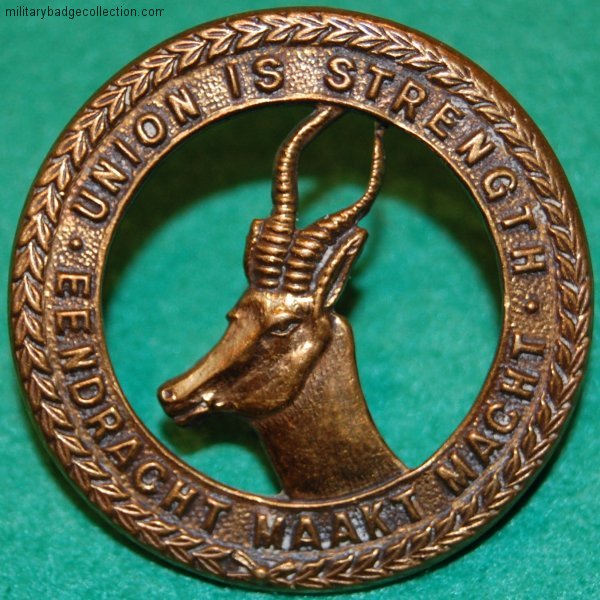Personal Details
Born: 18 February 1894 in Sydney, Australia.
Family: 2nd son of William and Eva Mary Bamber. The family returned from Australia in the late 1890s. William married Lillian Cardwell in December 1930 and, after her death, married again in 1954 to Doris Carline.
Civilian Occupation: The 1911 Census shows him as a waggoner; however by the time of the 1939 Register he had become a commercial traveller.
Residence: The 1911 Census shows him boarding in Tushingham, Cheshire (where the family settled on their return from Australia) and in 1939 he was living at 23 Crofts Building, Sims Street, Sheffield.
Died: 15 January 1960 at the Royal Hospital, Sheffield.
Regiment: 1st Infantry Cape Corps, Corps of Hussars
Rank: Corporal
Service Number: 50523
Date of Discharge: 18 July 1919
Further Information: His brother Oscar Stafford Bamber also served in WW1.
Roy was awarded the Campaign Medals (British War Medal and Allied Victory Medal).

The British War Medal (also known as 'Squeak') was a silver or bronze medal awarded to officers and men of the British and Imperial Forces who either entered a theatre of war or entered service overseas between 5th August 1914 and 11th November 1918 inclusive. This was later extended to services in Russia, Siberia and some other areas in 1919 and 1920. Approximately 6.5 million British War Medals were issued. Approximately 6.4 million of these were the silver versions of this medal. Around 110,000 of a bronze version were issued mainly to Chinese, Maltese and Indian Labour Corps. The front (obv or obverse) of the medal depicts the head of George V. The recipient's service number, rank, name and unit was impressed on the rim.
The Allied Victory Medal (also known as 'Wilfred') was issued by each of the allies. It was decided that each of the allies should each issue their own bronze victory medal with a similar design, similar equivalent wording and identical ribbon. The British medal was designed by W. McMillan. The front depicts a winged classical figure representing victory. Approximately 5.7 million victory medals were issued. Interestingly, eligibility for this medal was more restrictive and not everyone who received the British War Medal ('Squeak') also received the Victory Medal ('Wilfred'). However, in general, all recipients of 'Wilfred' also received 'Squeak' and all recipients of The 1914 Star or The 1914/1915 Star (also known as 'Pip') also received both 'Squeak' and 'Wilfred'. The recipient's service number, rank, name and unit was impressed on the rim.

